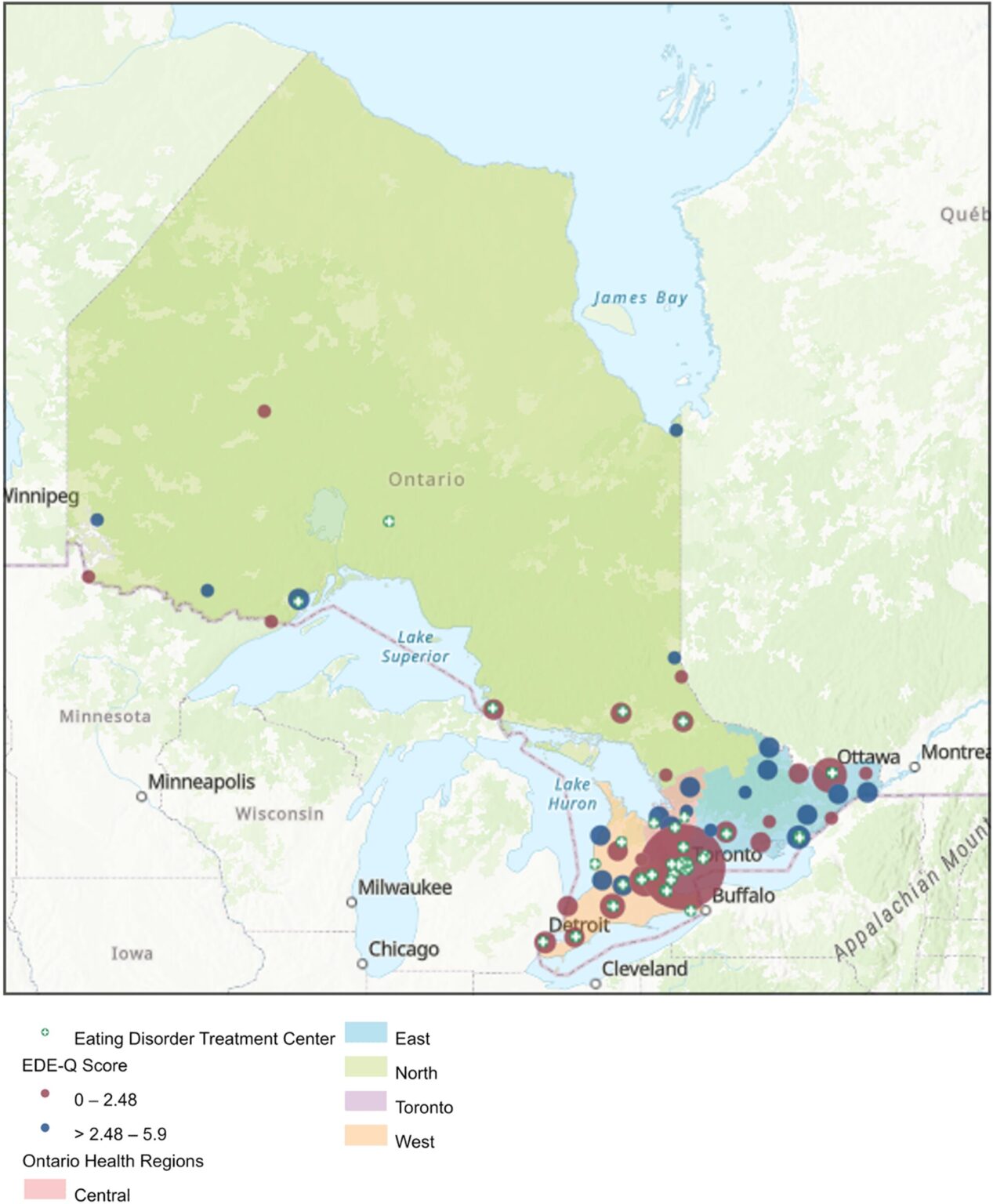
Specialized public eating disorder services in Ontario and clusters of eating disorders scores in Ontario. Credit: Journal of Eating Disorders (2024). DOI: 10.1186/s40337-024-01098-6
A new study has uncovered geographic disparities in the prevalence of eating disorders among adolescents and young adults in the Canadian province of Ontario. Rural regions exhibit significantly higher rates of eating disorders compared to urban areas; they are also more likely to lack specialized services to care for those with eating disorders.
The paper is published in the Journal of Eating Disorders.
“Our research emphasizes the urgent need for improved access to specialized eating disorder services in underserved regions,” says Nelson Pang, MSW, Ph.D. student and lead author on the study.
However, while rural areas have fewer services for those with eating disorders, the study did not find a direct association between distance to services and eating disorder severity. This finding suggests that rural-urban differences in prevalence may be linked to other factors, such as stigma and socio-cultural dynamics within rural communities.
“These results point to a concerning issue related to perceptions of eating disorders among adolescents and young adults in rural areas who may be at higher risk of developing them,” said Kyle T. Ganson, Ph.D., assistant professor and senior author on the study. “Given the barriers in accessing in-person care, particularly in rural Ontario, telehealth and other targeted interventions could play a crucial role in addressing this gap, offering a potential lifeline for those who are struggling.”
Data came from 1,377 adolescents and young adults ages 16–30 across Ontario from the Canadian Study of Adolescent Health Behaviors. The research team used Geographic Information System (GIS) technology to map the distribution of eating disorders and analyze proximity to publicly-funded specialized eating disorder services.
The authors underscore the need for policymakers and health care providers to prioritize expanding telehealth options and improving access to specialized care for underserved populations. By addressing the unique challenges faced by rural communities, the hope is to mitigate the burden of eating disorders and improve outcomes for young people across the province.
More information:
Nelson Pang et al, Mapping eating disorders in adolescents and young adults: an investigation of geographic distribution and access to care in Ontario, Canada, Journal of Eating Disorders (2024). DOI: 10.1186/s40337-024-01098-6
Provided by
University of Toronto
Citation:
Research finds rural versus urban divide in eating disorders in Canadian province of Ontario (2024, September 9)
retrieved 18 October 2024
from https://medicalxpress.com/news/2024-09-rural-urban-disorders-canadian-province.html
This document is subject to copyright. Apart from any fair dealing for the purpose of private study or research, no
part may be reproduced without the written permission. The content is provided for information purposes only.

